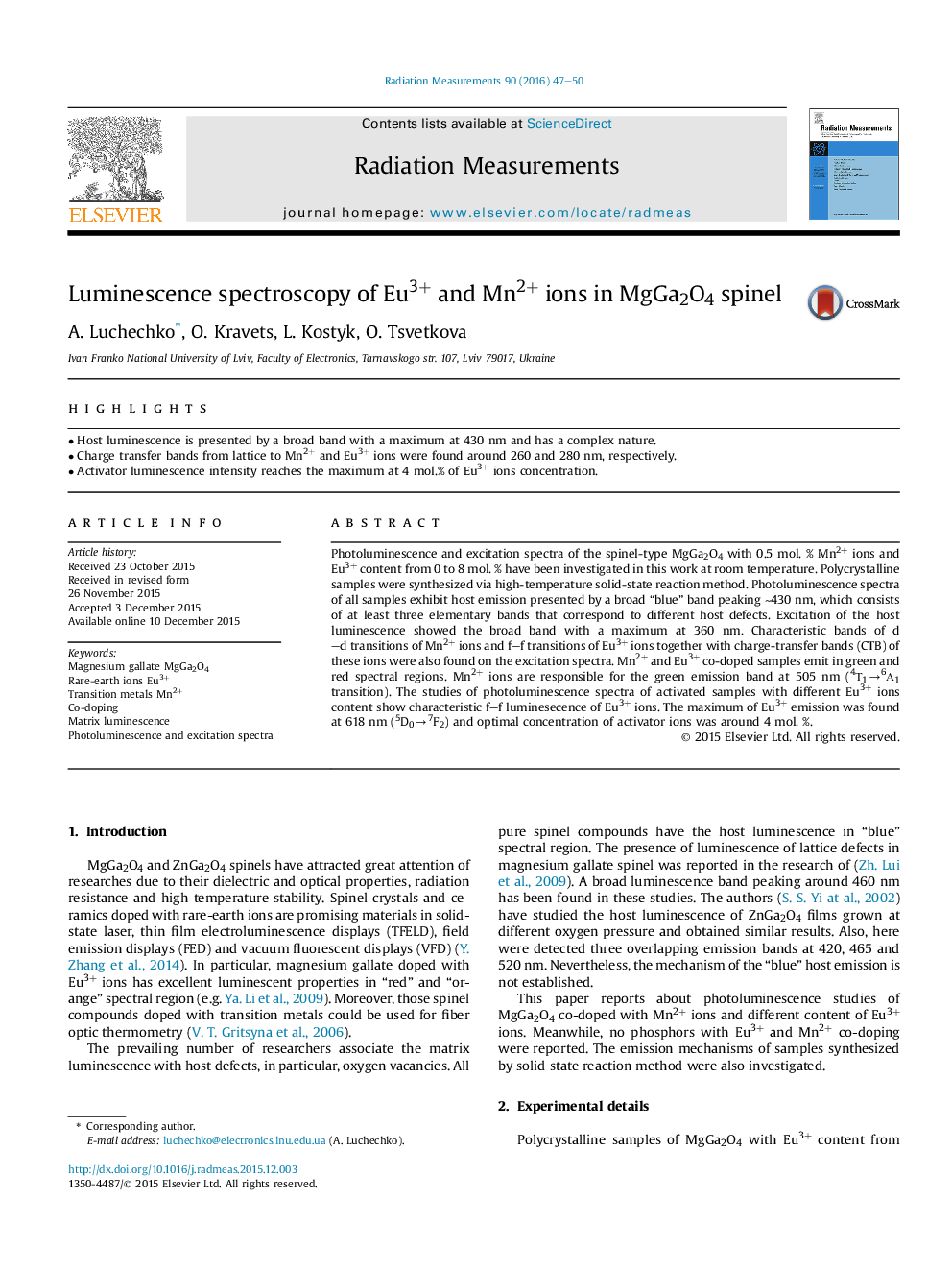| Article ID | Journal | Published Year | Pages | File Type |
|---|---|---|---|---|
| 1888008 | Radiation Measurements | 2016 | 4 Pages |
•Host luminescence is presented by a broad band with a maximum at 430 nm and has a complex nature.•Charge transfer bands from lattice to Mn2+ and Eu3+ ions were found around 260 and 280 nm, respectively.•Activator luminescence intensity reaches the maximum at 4 mol.% of Eu3+ ions concentration.
Photoluminescence and excitation spectra of the spinel-type MgGa2O4 with 0.5 mol. % Mn2+ ions and Eu3+ content from 0 to 8 mol. % have been investigated in this work at room temperature. Polycrystalline samples were synthesized via high-temperature solid-state reaction method. Photoluminescence spectra of all samples exhibit host emission presented by a broad “blue” band peaking ∼430 nm, which consists of at least three elementary bands that correspond to different host defects. Excitation of the host luminescence showed the broad band with a maximum at 360 nm. Characteristic bands of d–d transitions of Mn2+ ions and f–f transitions of Eu3+ ions together with charge-transfer bands (CTB) of these ions were also found on the excitation spectra. Mn2+ and Eu3+ co-doped samples emit in green and red spectral regions. Mn2+ ions are responsible for the green emission band at 505 nm (4Т1→6А1 transition). The studies of photoluminescence spectra of activated samples with different Eu3+ ions content show characteristic f–f luminesecence of Eu3+ ions. The maximum of Eu3+ emission was found at 618 nm (5D0→7F2) and optimal concentration of activator ions was around 4 mol. %.
